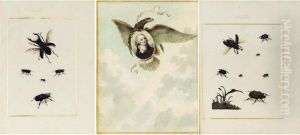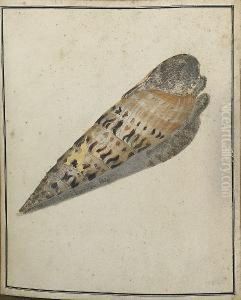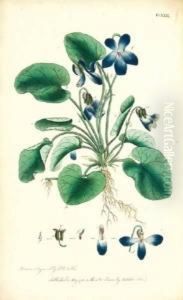Thomas Martyn Paintings
Thomas Martyn was an English botanist, entomologist, and clergyman known for his contributions to the natural sciences during the 18th and early 19th centuries. Born in 1735, he came from a scientific background, as his father, John Martyn, was also a botanist and professor of botany at Cambridge University. Thomas Martyn followed in his father's footsteps, becoming a botanist and an academic in his own right.
Martyn is best known for his work 'The English Entomologist,' which depicted the life cycles of various insects and was published in 1792. He also published a number of other works on botany, including 'Thirty-eight Plates with Explanations; intended to illustrate Linnaeus's System of Vegetables, and particularly adapted to the Letters on the Elements of Botany,' which was intended as an accompaniment to letters by Jean-Jacques Rousseau on the subject of botany.
In addition to his work in botany and entomology, Thomas Martyn was a professor of botany at Cambridge University, taking over the position from his father in 1762. He held the professorship until his death in 1825, although it is reported that he gave his last lecture in 1796. Throughout his career, he was noted for his efforts to popularize the study of botany and for his advocacy of the Linnaean system of classification.
Martyn's contributions to the field of botany were significant during his lifetime, and he was a contemporary of many important figures in the natural sciences. His works were widely read and provided valuable insights into the classification and study of plants and insects. Despite his scientific pursuits, Martyn also took holy orders and was involved in the church, a common practice for scholars of his time.
Thomas Martyn passed away in 1825, leaving behind a legacy as a dedicated botanist and educator. His efforts in the dissemination of scientific knowledge and his role in the academic community were important in the advancement of natural sciences during the period.


